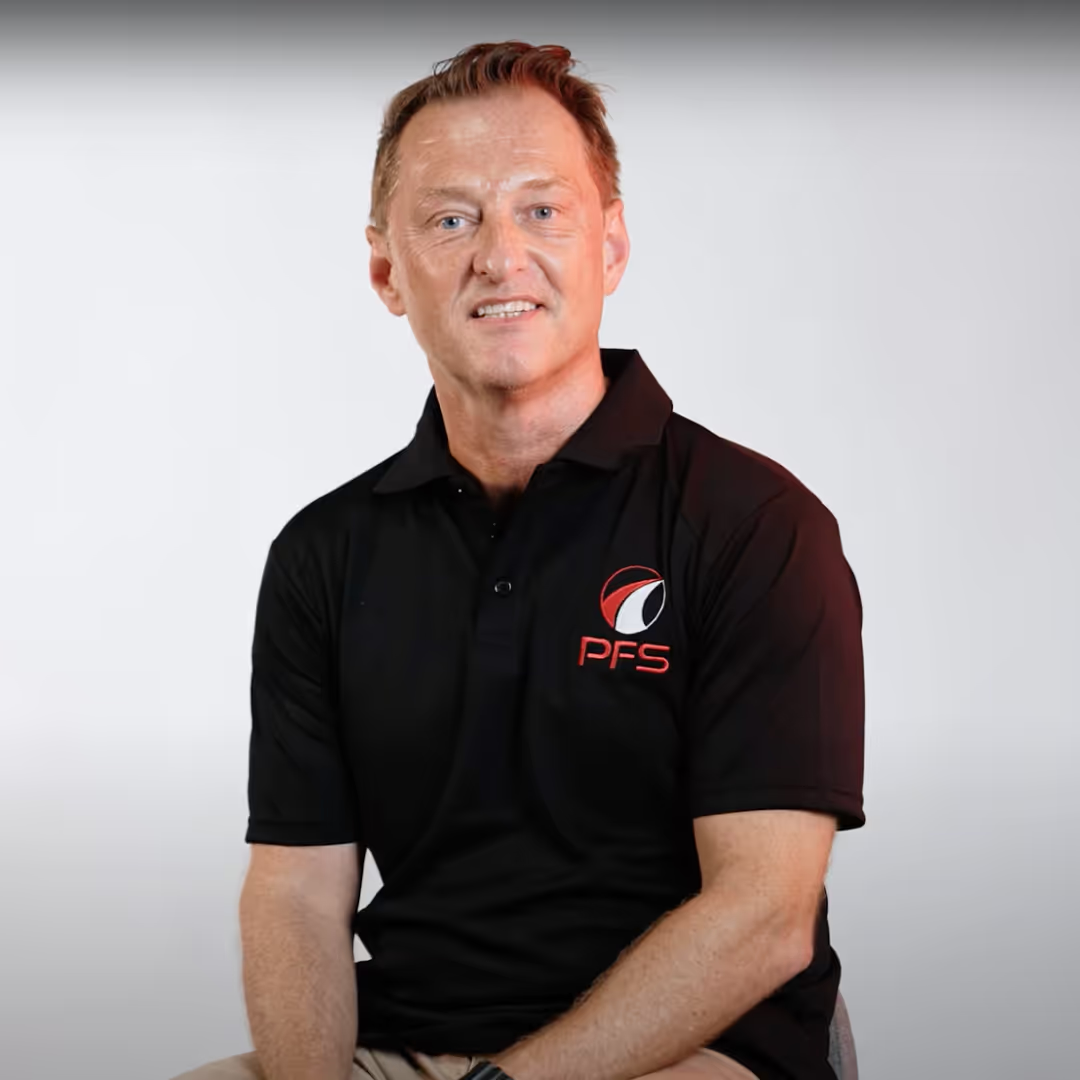Your Performance-Based Client Acquisition Partner.
We're building the next chapter of Flip Marketing.
Our new website will launch in February 2026.
Fed up with your marketing agency? You're not alone.
Businesses are waking up to the fact that most marketing agencies aren’t built for performance. They’re bloated, slow, and rarely deliver the commercial outcomes that actually matter. Our new direction is designed to solve this once and for all. Because at the end of the day, sales and revenue are the real constraints holding businesses back. And that’s the exact problem we’ve made it our mission to fix.
.avif)

Regen Kitchens
When Regen Kitchens came to us they had tried DIY marketing with little to show for it. We implemented a targeted, scalable Facebook campaign and in less than 3 months we 10x their business; they have since hired 3 new staff and continue to expand.
Spent on Facebook advertising.
Revenue generated.
Client Testimonials
Results speak louder than promises.
Flip elevated our business, taking us to the next level. In just two weeks, we were inundated with leads, experiencing our most profitable weeks ever. Now booked out two weeks in advance, we highly recommend Flip for exceptional value and results.
.avif)
We hired Flip to run ads for our construction company, the team were super easy to deal with, they generated so many leads that we had to set up systems with them to help us process everything! They were very responsive and the turn around on jobs was great.
.avif)
Our Services
Agencies try to do everything; we focus on one thing: generating high-quality, high-intent leads for service-based businesses. Our systems, data, and processes are engineered purely for client acquisition, not vanity metrics. Every campaign is built to create real opportunities that turn into real revenue.
Lead Generation
We build and run acquisition systems that consistently deliver high-intent opportunities, engineered through proven campaigns, smart filtering, and performance-driven strategy. No guesswork, just predictable growth.
Conversion Optimisation
We turn your existing traffic and leads into more sales by refining your funnels, landing pages, messaging, and user journeys. The goal is simple: increase your revenue without increasing your spend.
Business Automation
We streamline your operations with custom automations, workflows, and systems that remove bottlenecks and free up your time. Less manual work, fewer errors, and a business that runs smoother every day.
Marketing Training
We train you and your team to market with confidence, clarity, and structure. Teaching you the same principles, frameworks, and operating systems we use internally. Practical, real-world training that lifts your capability fast.

No Pressure
Sunshine Coast
When No Pressure Sunshine Coast reached out, they were on the verge of shutting down. Revenue had dried up and the business was barely keeping the doors open. We launched a targeted advertising campaign and within the first 7 days generated over $4,000 in booked work, enough to stabilise the business and rebuild momentum.
Fast forward two years and the results speak for themselves. Their business is now driven by a predictable, scalable client acquisition system.
Spent on Facebook advertising.
Revenue generated.
AcquisitionOS: our performance-based client acquisition system.
AcquisitionOS was built to solve the biggest issue holding service businesses back: broken client acquisition systems. Most companies bounce between agencies, DIY marketing, and short-term campaigns, constantly guessing what might work next. Nothing compounds, nothing becomes consistent, and growth ends up tied to luck instead of a reliable system.
Our platform removes that uncertainty. Instead of experimenting, you plug into a client acquisition engine that’s already been refined through millions in ad spend, thousands of data points, and years of optimisation. While others are still testing ideas, you’re stepping into a system that’s stable, predictable, and engineered to deliver qualified buyers, not noise.
The advantage is simple: AcquisitionOS gives you what most businesses never get access to. You’re no longer relying on referrals, internal marketing staff, or agencies that “try their best.” You’re backed by a performance-driven acquisition system that becomes stronger the longer you use it; giving you control, consistency, and a true edge over your competitors.
Proven system, zero guesswork
We’ve spent 4+ years and over $10M in ad spend perfecting a lead acquisition engine that’s generated $80M+ for clients. You plug into a system that’s already battle-tested. No trial-and-error, no DIY marketing.
Choose your lead pack
Pick the volume of leads you want. We handle the entire acquisition pipeline including ads, funnels, filters, tech and optimisation. All done for you behind the scenes.
We deliver pre-qualified, ready-to-talk leads
Every enquiry is generated, validated, contact-checked, and qualified before it ever hits your inbox. We only connect you with real people who are ready for a conversation.
You only pay for contactable leads
No surprise ad spend bills. No wasted spend. If you can’t speak to them, you don’t pay for them. This is how marketing should work.
Planning For Success
Before working with us, Planning for Success had cycled through multiple marketing agencies with little to show for it. No real results and no real care. Nothing was moving the needle, and the traditional “run some ads and hope” approach had hit its limit.
When we partnered together, we introduced an outside-the-box strategy: in-person information nights designed to educate, build trust, and convert warm audiences at scale. Since launching the campaign, we’ve run 12 successful events, consistently attracting 40+ attendees each; the results speak for themselves.
Spent on Facebook advertising.
Revenue generated.

Frequently Asked Questions
Find answers to common questions about our work and process.
AcquisitionOS is our proprietary, in-house lead generation platform. It’s the engine we’ve built from $10M+ in ad spend and 4 years of optimisation. AcquisitionOS runs the ads, handles the funnels, applies our pre-qualification framework, and delivers conversation-ready opportunities at scale. It’s designed for businesses that want predictable, high-intent leads without managing marketing, content, or ad spend themselves.
Flip, on the other hand, is our client acquisition firm. This is where we work 1:1 with a small number of businesses to build custom client acquisition systems, marketing infrastructure, CRO, content, and full-stack growth marketing. Flip is application-only, meaning we only partner with brands that align with our values, have strong operational foundations, and are businesses we genuinely believe we can help scale long-term.
In short:
AcquisitionOS = plug into our system and buy ready-to-talk leads.
Flip = a high-touch, selective partnership where we build your entire acquisition machine with you.
AcquisitionOS:
No. AcquisitionOS is purely pay-per-lead. No long-term contracts, no retainers, no lock-ins. Choose your lead pack, receive opportunities, pause or scale whenever you need.
Flip:
Flip is a selective, high-touch engagement. If we partner with you 1:1, there is a structured agreement because we’re building your acquisition ecosystem, your strategy, your content, and your marketing operations. It’s not short-term, it’s a growth partnership.
AcquisitionOS:
Usually within 24–72 hours after onboarding. AcquisitionOS plugs you into an already-running acquisition engine. No setup lag, no “waiting for ads to learn.”
Flip:
Flip involves custom strategy, research, build-out, content, CRO, and campaign development. Timelines vary based on scope, but most clients see early traction in the first few weeks, with full systems rolling out shortly after.
AcquisitionOS:
Yes. we provide scripts, CRM, follow-up frameworks, call structures, objection handling, and fast-response systems to help you maximise conversions from AcquisitionOS leads.
Flip:
Flip offers a deeper version of this. For 1:1 clients, we refine your entire sales ecosystem including pipeline structure, CRM setup, reporting, follow-up automation, sales training, performance coaching, and long-term optimisation.
Our team is based on the Sunshine Coast, Queensland, operating out of our dedicated office where our marketing, strategy, creative, and operations teams work day-to-day. All client communication, project management, and support is handled during our standard operating hours of 9am–4pm AEST, Monday to Friday. During these hours, clients can expect fast responses, active project updates, and direct access to the people responsible for their results.
For Flip (1:1 Partnership) clients:
Flip works with clients right across Australia, and where it’s needed, our team can meet with you in person for workshops, content production days, or strategy intensives. We’re built to support you remotely day-to-day, but when a project requires hands-on collaboration, training, or deeper integration, we’ll be there on-site to make it happen.
For AcquisitionOS clients:
AcquisitionOS is intentionally designed to be fully remote for speed, ease, and scalability. Everything from onboarding, lead management, billing, reporting, and support runs through our online client portal, allowing you to manage your account without meetings or delays. You’ll also have access to 9am–4pm AEST support through live chat and our resource library, ensuring you can get help quickly whenever you need it. This remote, self-serve system allows us to deliver leads consistently and efficiently while keeping the process simple for you.
AcquisitionOS:
AcquisitionOS is built for speed and simplicity. Once you sign up, you’ll receive access to our client portal, where you can manage your lead pack, view your leads, track billing, and access support — all in one place. There’s no heavy onboarding, no filming, and no setup delays. Your campaigns plug straight into our existing acquisition engine.
All AcquisitionOS clients receive 9am–4pm support through the portal or live chat, and the entire experience is handled remotely for ease and convenience. It’s designed so you focus on running your business without meetings, calls, or back-and-forth.
Flip (1:1 Partnership):
Flip is a high-touch engagement with a full-scale onboarding and strategy process. Once accepted into the program, you’ll be set up inside our custom project management system, where you’ll have complete visibility into everything—timelines, deliverables, content production, CRO, ad builds, creative, and strategy. You get direct access to the marketing team working on your project: strategists, media buyers, content creators, designers, developers, and copywriters.
This is real-time, transparent project management with every step clearly documented and updated as we progress.
Lead Quality & Scaling:
AcquisitionOS is built on controlled scaling, not blasting generic ads to everyone. Each niche operates with strict targeting, capped locations, filtering, and active campaign optimisation. As demand increases, we scale spend vertically (improving conversion rates and qualification processes) before we ever scale horizontally into broader audiences. This protects lead quality and avoids saturation or diminishing returns.
Exclusivity:
All leads from AcquisitionOS are 100% exclusive to your business. No shared lists, no recycled leads, no “multiple quotes” model. Once a lead passes our qualification process, it’s delivered directly to you and only you.
Billing & Payments:
AcquisitionOS uses a contactable-only billing model.
You only pay for leads you can actually speak to; if they can’t be contacted, they’re not billed. Payments run through your secure client portal, with options for prepaid lead packs, auto-top-ups (optional), and transparent billing logs so you can see exactly what you’re paying for.
Lead Information Provided:
Every lead comes with a full qualification profile, including:
• full name and contact details
• location/service area
• project type or service request
• budget (where relevant)
• timeline to proceed
• intent signals and qualification notes
• validation checks (contactability, filters passed, etc.)
This ensures you get context, clarity, and a warm starting point, not cold data.

.avif)